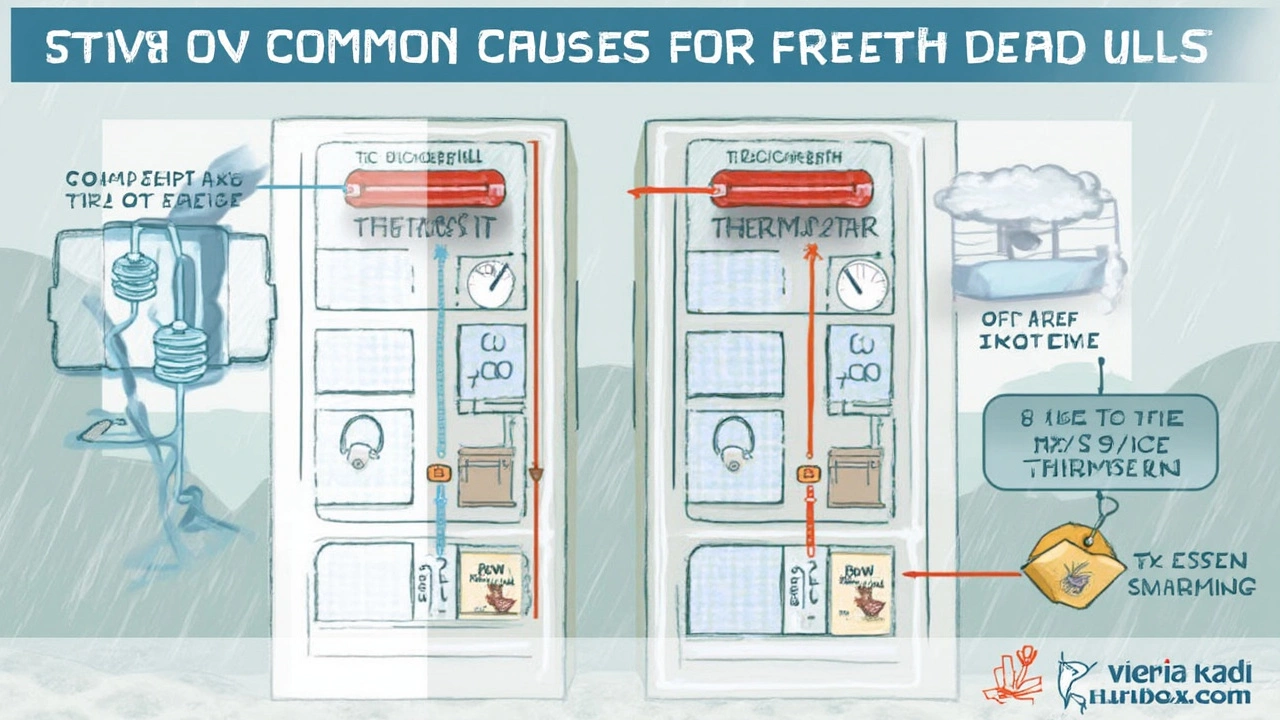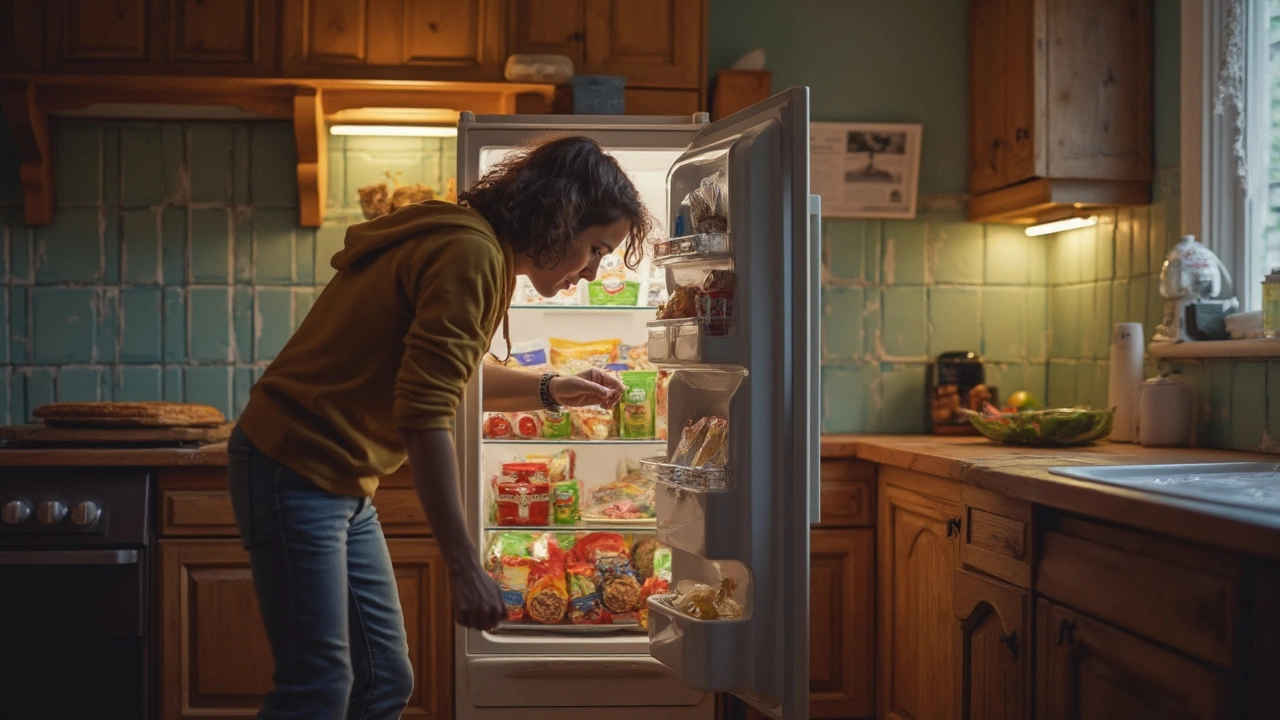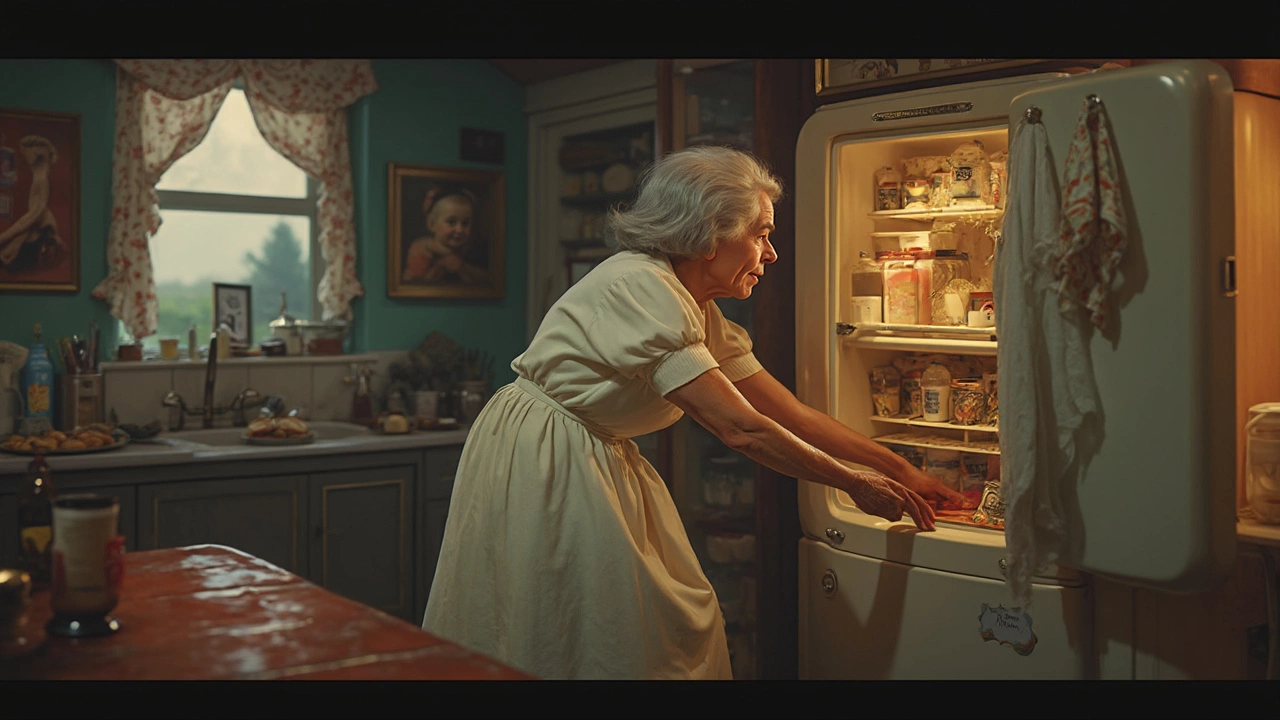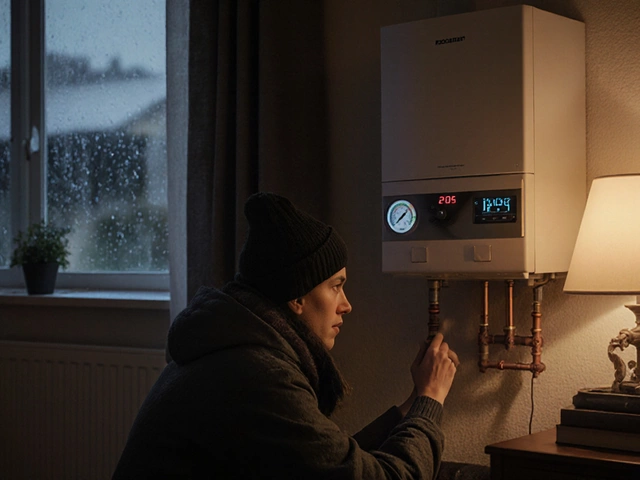So, your freezer just threw in the towel? That’s not a fun surprise, especially if it’s packed with food. First things first—don’t panic! There are steps you can take to potentially save your stash and sort things out.
Before diving into panic mode, check the basics. Is the freezer still plugged in? It sounds silly, but sometimes a loose plug or blown fuse is the culprit. If it’s not a power issue, open the door and see if the light is on. No light? Could be a problem with the power supply.
Now, while you’re figuring stuff out, try not to open the freezer too often. Keeping the door closed helps trap the cold air inside, buying you some time before things get too warm.
If a quick fix isn’t obvious, think about shifting your food to a neighbor’s freezer or grabbing some ice and a cooler to keep essentials chilly while you figure out what’s next.
- Immediate Actions to Take
- Why Freezers Quit
- Troubleshooting Tips
- DIY Fixes vs. Professional Help
- Preventative Maintenance
- When to Replace Your Freezer
Immediate Actions to Take
When your freezer suddenly quits, the clock is ticking on your perishables. Here’s a quick rundown of what to do right away to keep your food safe and tackle the issue head-on.
Check the Power Supply
Your first step is to check whether your freezer is still plugged in securely. It seems basic, but it’s a common oversight. Next, peek at your circuit breaker box to ensure nothing has tripped off.
“Sometimes, the solution is as simple as a reset or reconnecting a loose plug,” says appliance repair expert, John Michaels. “Don’t underestimate the power of basic troubleshooting.”
Minimize Door Openings
Keep the freezer door closed as much as possible. This helps retain the cold air that’s already inside. Remember, each peek lets out precious cold, hastening thawing.
Do a Simple Inspection
Inspect the seals around the freezer door. If they’re not tight, cold air could be seeping out. A faulty seal is often a reason many freezers struggle to stay cold.
Relocate Your Food
If you have a neighbor or friend nearby with extra freezer space, take advantage of it. Alternatively, load up a cooler with ice packs for critical items like meats and dairy products.
- Utilize ice packs or bags of ice for temperature management in a cooler.
- Consider food-sharing apps to distribute excess food quickly to avoid wastage.
Look for Red Flags
Listen for any unusual noises or silence from the freezer, which might indicate motor or fan malfunctions. If the compressor is running but not cooling, this might be a sign of a more serious problem.
| Action | Estimated Time Saved |
|---|---|
| Keep door closed | Up to 48 hours |
| Move food to cold storage | Up to 24 hours |
Tackling these steps can buy you valuable time and possibly offer a simple fix without needing professional intervention. But if nothing works or you feel in over your head, it’s time to move on to further troubleshooting or call for professional help.
Why Freezers Quit
Ever wonder what makes a freezer suddenly stop working? It's more common than you'd think, and there are several typical reasons behind it. Let’s bust into some details on why our trusty freezing machines might take a nap.
Power Problems
The most straightforward reason is power issues. A disconnected plug or a tripped circuit can leave your unit powerless. Always double-check these before assuming the worst. It’s one of those freezer troubleshooting steps that often gets overlooked.
Thermostat Troubles
If the freezer's temperature control or thermostat is on the fritz, it might not kick on. A faulty thermostat can either make your freezer too warm or too cold. Fixing or replacing this might be trickier and may call for a professional.
Complications with the Compressor
The compressor is basically the heart of your freezer. If it’s not working right, your freezer won't cool. You might hear clicking noises from a failing compressor before it fully gives out. In some cases, this means a new compressor is needed.
Dirty or Damaged Coils
Condenser coils that are covered in dust can’t do their job. They need to be clean to release heat effectively. Giving them a good dusting could be all it takes to bring your freezer back from the dead. However, if coils are damaged, it might require further repair.
Seal and Door Problems
A poor seal lets warm air sneak inside, making your appliance work extra hard to keep things cold. A quick test with a piece of paper—close the door on it and see if it slips—can tell if the seal’s still good. If not, it's time to look into replacements.
Refrigerant Levels
Low refrigerant levels can mess with cooling efficiency. Not something most folks can fix on their own, but knowing could help when you’re talking to a repair person.
Understanding these common issues can make freezer repair a less daunting task. So, next time those leftovers are in peril, you’ll know just what might be going on inside that metal box.
Troubleshooting Tips
Got a broken freezer stressing you out? Let's break it down and see what's really going on. Sometimes it's something easy to fix, or it could be a sign that you need a new part. Here are some solid troubleshooting steps to get started.
Step 1: Listen for Noises
Start by using your ears. Is the freezer making any strange noises? If it's humming quietly, good, the compressor is doing its thing. If you hear rattling or grinding, that's not normal and could mean something's loose or broken.
Step 2: Check Temperature Settings
Seems obvious, but check the temperature setting. Someone might have bumped it accidentally. Your freezer should usually be at zero degrees Fahrenheit (-18°C) to keep things properly frozen.
Step 3: Inspect the Seals
See if the door seals are airtight. Close a piece of paper in the door and pull it out. If it slips out easily, the seal could be the issue. Warm air slipping in makes your freezer work overtime.
Step 4: Look at the Condenser Coils
The condenser coils, usually located at the back or underneath, can gather dust. Unplug your freezer and clean them gently with a vacuum or soft brush. This can help improve cooling efficiency.
Step 5: Consult the Manual
Don't underestimate the power of your appliance's manual. Sometimes the solution to frequent issues is right there in those pages. Take a quick glance.
Step 6: Test the Defrost Timer
If your freezer is too warm, a stuck defrost timer might be the reason. It's part of the system that melts frost buildup. If it stays in defrost mode too long, things can warm up.
| Component | Estimated Cost ($) |
|---|---|
| Door Seal | 40 |
| Condenser Coil Cleaning | Free with DIY |
| Defrost Timer | 60 |
If these steps don't solve the problem, you might need to call in a professional. Keep these troubleshooting tips handy—they'll help you speak the same language as your repair person if they do need to come out.

DIY Fixes vs. Professional Help
So you’re staring at your broken freezer, asking yourself, "Can I fix this myself, or is it time to call in the pros?" Let’s break it down into what you can tackle on your own versus what’s best left to the experts.
When to Roll Up Your Sleeves
Sometimes, the problem is simple enough that you can handle it without busting out the toolbox. Here are a few things you can try:
- Check temperature settings: People often accidentally knock dials when reaching for something. Make sure it's set to the right temp (0°F or -18°C is what you want).
- Inspect the door seal: A loose or cracked seal can let warm air in. Close a piece of paper in the door—if it slips out easily, you might need to replace the seal.
- Coils and filters: Dirty coils are not your friend. Pull the freezer away from the wall and give the coils a clean, but always unplug the appliance first.
Let’s Call the Professionals
If the freezer is making weird sounds, has electrical issues, or simply isn’t cooling, it’s time to call somebody who knows their stuff. Here’s when to drop the DIY attempt and let someone else handle it:
- Electrical problems: You don’t want to mess around with wiring unless you’re trained. Avoid risks and let a professional electrician take care of it.
- Strange noises: Clicking, buzzing, or loud humming noises can indicate serious mechanical issues. It's usually the compressor, and fixing or replacing it requires a pro.
- Persistent cooling issues: If you’ve done all the basic checks and it’s still not working, it might need a more technical fix than you'd expect.
A study by the Association of Home Appliance Manufacturers found that regular maintenance and swift repairs can extend the life of your freezer by 20%. Keep that in mind before decision fatigue sets in!
Sometimes spending a little more upfront to keep freezer repair headaches at bay is worth it. Remember, knowing when to DIY and when to call an expert can save you time and potential damage.
Preventative Maintenance
Keeping your freezer in tip-top shape doesn’t have to be rocket science. Simple routine checks and minor TLC can keep your freezer from quitting on you at the worst possible time. Let’s dive into some basics of freezer maintenance you can do yourself.
Clean the Coils
Did you know your freezer’s coils need a clean every six months? Dust and dirt can pile up there and make your freezer work harder. Unplug the appliance and use a vacuum with a brush attachment to gently clean these coils.
Check the Seals
The rubber gasket around the door—also known as the seal—is crucial for keeping cold air inside. Sometimes, they lose their grip. A quick test? Close the door on a dollar bill halfway. If it slips out easily, the seal might be worn.
"Sealing in cold air is vital to energy efficiency. It's worth checking the seals at least yearly," says Tom Monroe, an appliance repair expert.
Temperature Check
Keeping your freezer at the right temperature is key. It should be around 0 degrees Fahrenheit (-18 degrees Celsius). If it’s off, your compressor might overwork or underperform.
Don’t Overfill
Seems counterintuitive, but too much food can obstruct air circulation. Space allows cold air to flow freely, keeping everything evenly chilled.
Regular Defrosting
Even if you have a frost-free model, check for ice build-up. Too much ice can cause performance dips. A quick manual defrost might be the answer.
Consider these freezer troubleshooting tips as routine reminders in your calendar. Putting in a little effort now can save a chunk of change—and your sanity—later on.
When to Replace Your Freezer
Figuring out when to throw in the towel on your old trusty freezer isn't always easy. It's not just about it stopping one day. Sometimes, knowing when to replace a broken freezer requires a bit of judgment and maybe a calculator. Let’s break it down.
Signs It’s Time to Say Goodbye
Keep an eye out for these signs that it might be time to move on from trying to fix a broken freezer:
- Excessive Noise: If your freezer sounds like it's preparing for lift-off every time it kicks on, it might be beyond a simple tune-up.
- Constant Breakdowns: If you’re frequently scrambling to save your food due to breakdowns or can’t even remember the last time it ran smoothly, it’s probably time to consider a replacement.
- Energy Inefficiency: An old or struggling freezer can really hike up your electricity bill. If it's guzzling more power than it should, a new model might save you money in the long run.
- Age: Most freezers have a lifespan of around 10-20 years. If yours is nearing that marker and causing headaches, a new model is worth considering.
Cost versus Benefit
Nobody wants to shell out cash unnecessarily, so evaluate whether repair costs are stacking up. A general rule of thumb—if the repair cost is more than half the price of a new model, go shopping instead. Check out energy savings and warranties when you’re deciding. Newer, energy-efficient models often come with great warranties and might end up saving you money on bills.
Stats to Consider
Check this out—according to some recent data, households save an average of 10-30% on their utility bills after upgrading to a modern, energy-efficient fridge or freezer. That’s real money, folks!
Knowing when to say farewell isn’t always cut and dry but looking out for these signs and doing a bit of number crunching can help. Besides, who doesn’t love a shiny new appliance as a centerpiece in their kitchen or garage?





